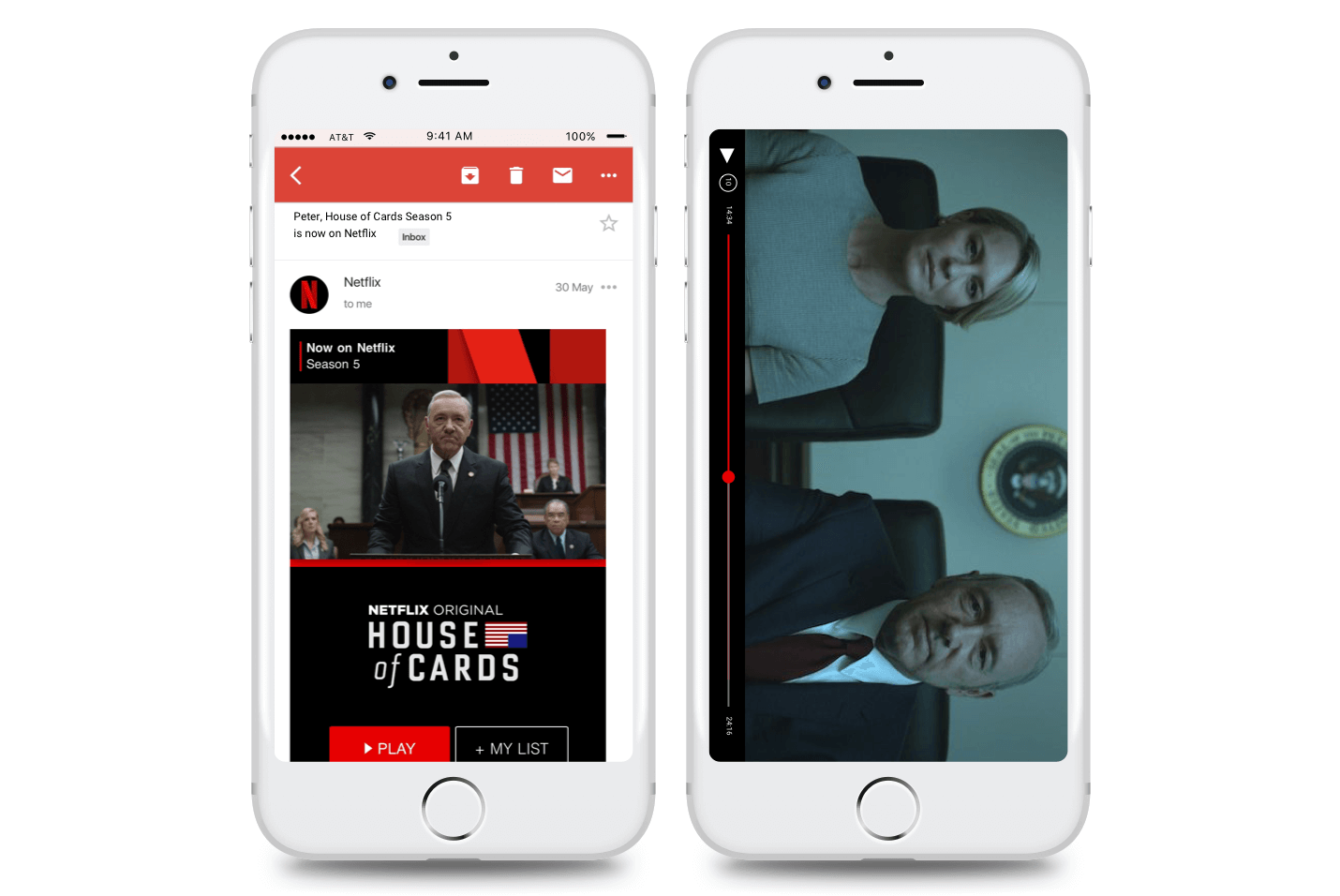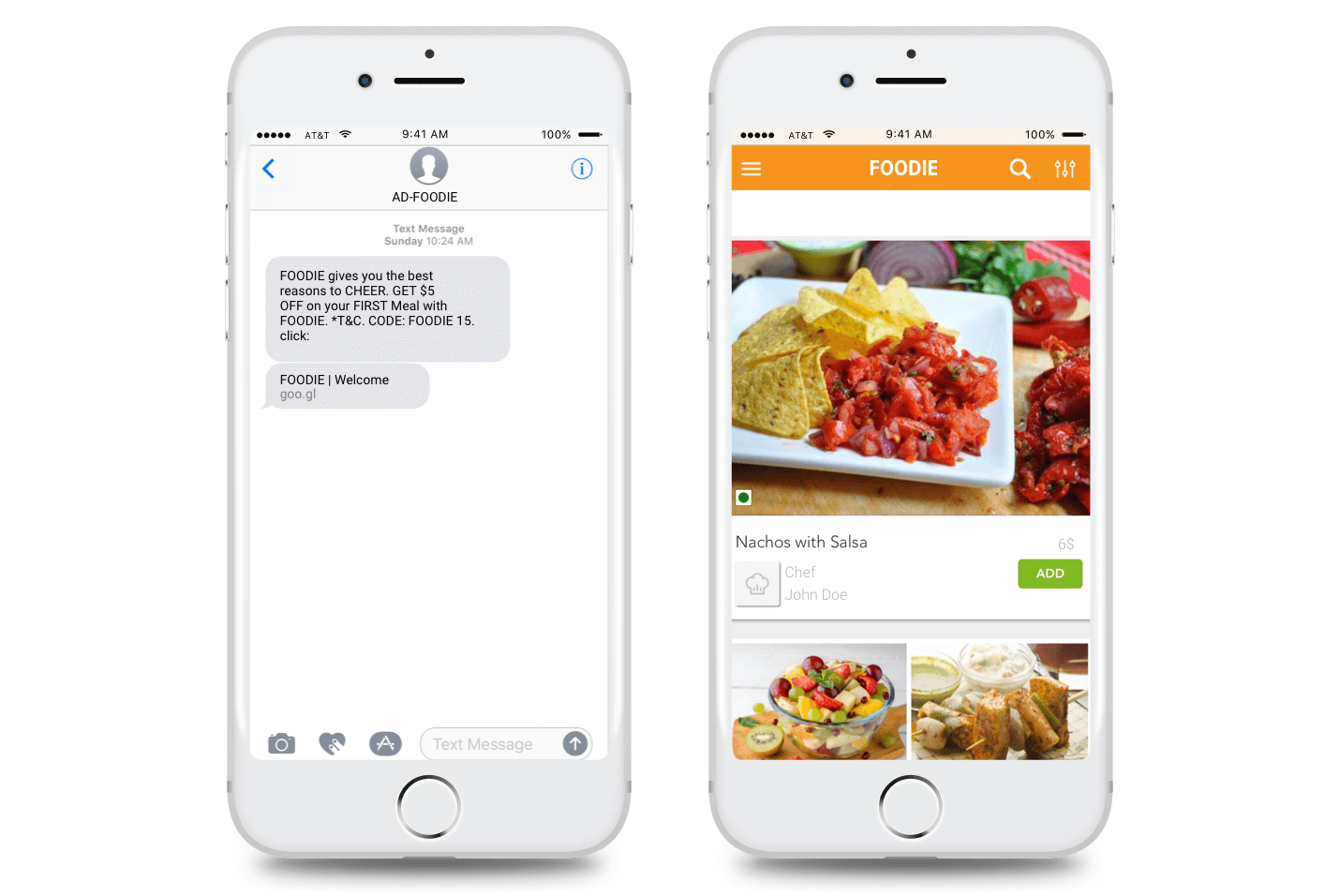For Netflix bingers like me, this title is not just about deep linking but also a quick reference to Netflix’s most-watched series this season – 13 Reasons Why. The reason I took the effort and your time to explain the reference is because this post is a result of something Netflix did to me.
A week ago, I got one of those emails from Netflix about how I had left a show mid-way and if I would like to continue watching it. I was bored -doing nothing- so I opened the mail and clicked on the show named ’13 Reasons Why.’ The link didn’t just take me to the homepage of Netflix, nor did it just launch the app on my phone. It triggered the app to open the player and start playing the show from the exact point, where I left watching.
What are Deep Links?
Deep links are links which take you to a designated piece of content, directly. Deep links are used to direct traffic to a certain page without leaving the user journey at the discretion of the user by trusting their navigation on a website or mobile app.
Deep links exist in both websites and mobile apps.
Deep Links on the web:
Deep links on the web are so common that they aren’t even called by that name. They are called by the more commonplace name – direct links. They are an extension of the website URL, which takes you to a specific page hosted on the website’s domain. For example, our website’s URL is https://clevertap.com/ , which will take you to the homepage of our website. You can then choose to navigate to our other pages from there. But if I provide you with a deep link – https://clevertap.com/product/ , it takes you to the ‘product’ page directly (and you should totally check it out).
Deep Links in Mobile Apps:
Instead of URLs, mobile apps operate on URIs or Uniform Resource Identifier. A mobile app deep link can trigger a pre-installed mobile app or take you to a particular screen inside the mobile app.
A more complex and recent category of deep-links, -deferred deep links- have come to be even more useful. They check whether a certain mobile app is pre-installed or not and then take you to a specified screen inside the mobile app. The extra ability is to take the user to the app store installation page for that mobile app, and to subsequently take the user to the desired screen upon installation.
Since a lot has already been written, talked and implemented about web deep-links, we are going to focus specifically on the capabilities and effective implementation of mobile deep-links from a marketer’s perspective.
Mobile deep links have been around for a long time now. For developers, it has been around since iOS 2.0, which makes it almost a decade old. The adoption has been pretty lethargic more because of the limited measurable implications of deep linking than anything else. But times have changed. Today, marketers are making use of deferred deep links and contextual deep-links to such effect & magnitude, that it has become a must have in every marketer’s arsenal.
So, if you’re an app marketer serious about acquisition, retention, and conversion as a whole, we present to you the reasons why deep links are your thing.
1. Email Marketing
Why: Most ROI effective channel in terms of reach and conversion.
What to do: Something very similar to what Netflix does and also did to me. Send contextual deep links to your users and launch the app from exactly where they left off or from the point you want them to resume consumption or in-app activity.
What’s the gain: Increased user engagement, better retention, and the increase in Active Users.
2. Display Marketing
Why: One of the oldest and most relevant modes of high-reach marketing.
What to do: Share a deferred deep link through your banner ads so that when the user has your app, it automatically fires up and if he doesn’t, it takes him to your app store download page.
What’s the gain: The app when fired up, takes the user directly to the product advertised in the display ad. Thus, trimming the conversion cycle for better ad ROI.
3. Search Engine Marketing:
Why: E-commerce’s top 3 channels of traffic.
What to do: Provide deep links in your search engine ads. This will shorten the path of the user from the search engine – mobile website – mobile app – transaction. You can create the link in such a way that it automatically adds the product to the customer’s basket and the only step left is payment.
What’s the gain: Less number of steps for the customer, lesser chances of cart abandonment.

The Psychology of Insanely Addictive Apps
4. Mobile App Promotion through Mobile Website
Why: Native and cost-free channel of app installs
What to do: Create app-only discounts on products and create a deferred link for each of those products. When the user clicks on any such CTA, it takes them to the app store, installs the app and takes the user to the specific product page, with auto-applied discount.
What’s the gain: Seamless experience for the user when transitioning from mobile web to app, thus reducing the possible churn.
5. Affiliate Marketing
Why: Pricey but reliable channel for targeted acquisition
What to do: Pass a deferred deep-link as the affiliate link, which fires the app instead of the mobile website. It counters the frustration of getting to the exact product the users liked on the affiliate site, hence increasing the chance of conversion.
What’s the gain: When a user who has the brand app installed, clicks on an affiliate link, they are sent to the mobile site for the brand and asked to log in instead of detecting and opening the mobile app, which creates a visible leak in the funnel.
Bonus Reason: Text-me-the-app links
Why: Acts as a bridge between the desktop web and mobile app experience
What to do: Text-me-the-link works great for all businesses looking to build context through traditional SEO and driving that earned traffic to their mobile app. When you text the mobile-app link to the user, text a deep link with curated products and offers for new users.
What’s the gain: Your mobile app’s first moment-of-truth with the customer is the best foot forward. The personalization in terms of deals and products has much higher chances of conversion and retention than a ‘vanilla’ home page welcome.
Is there a Side – B?
Mobile deep links, though half a decade into existence, have started to find utility rather lately. This post was a primer to the concept and one of the biggest challenge of app-centric businesses – acquisition.
Side – B of this post will deal with the next step in the funnel; customer engagement and retention using deep-linking. Till then, implement the strategies, tell us if they worked or bombed and continue binging on the weekends.
The Intelligent Mobile Marketing Platform
Mrinal Parekh 
Leads Product Marketing & Analyst Relations.Expert in cross-channel marketing strategies & platforms.
Free Customer Engagement Guides
Join our newsletter for actionable tips and proven strategies to grow your business and engage your customers.















































